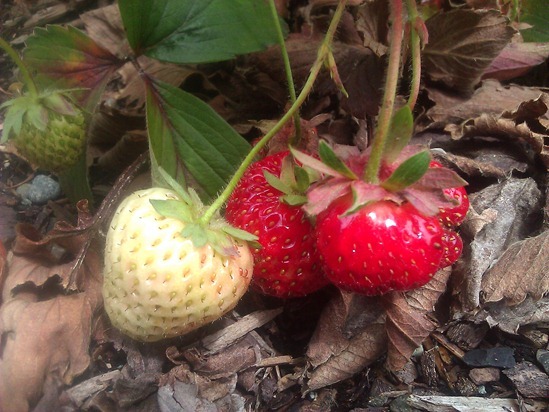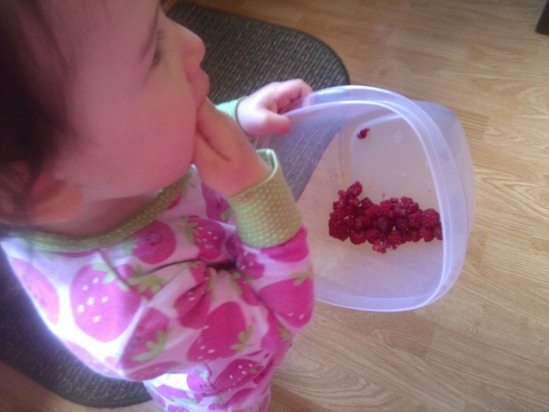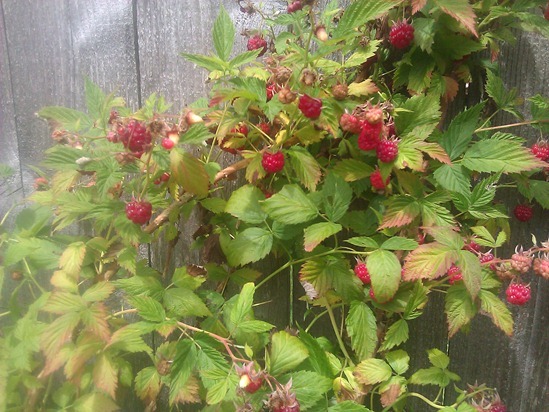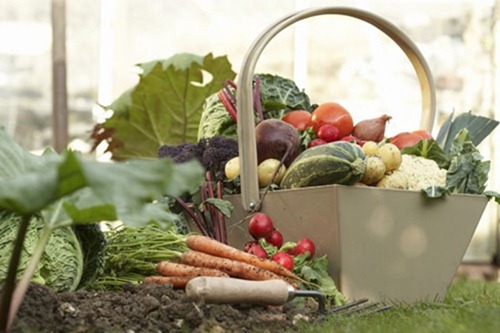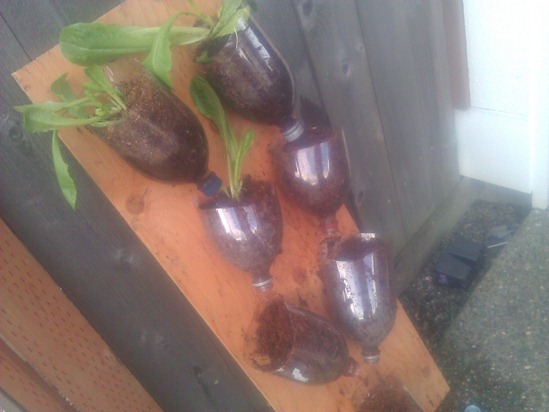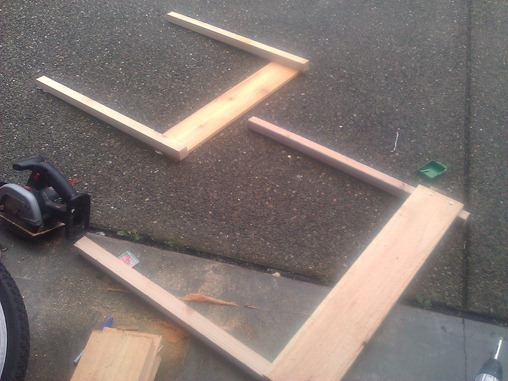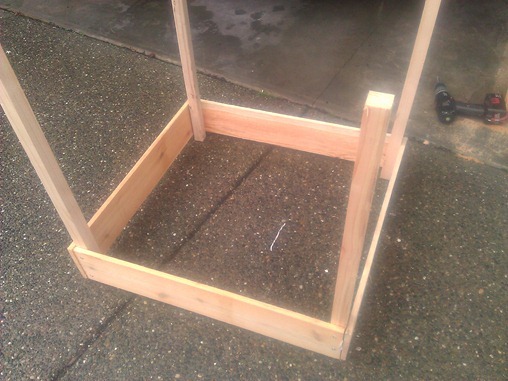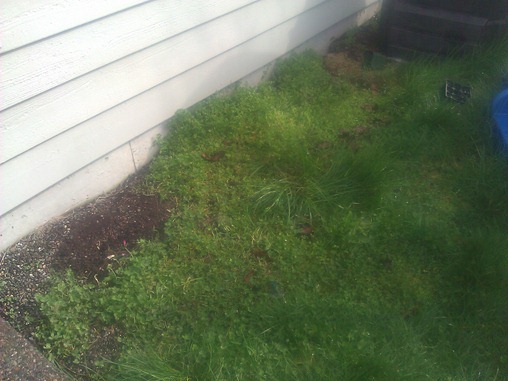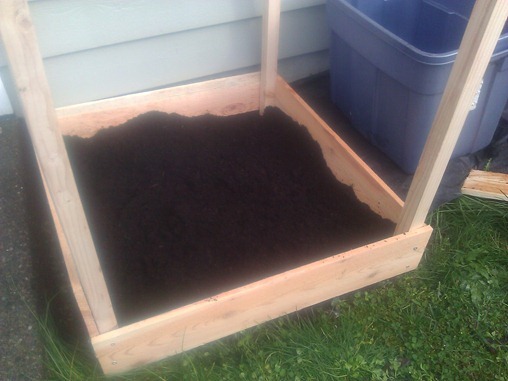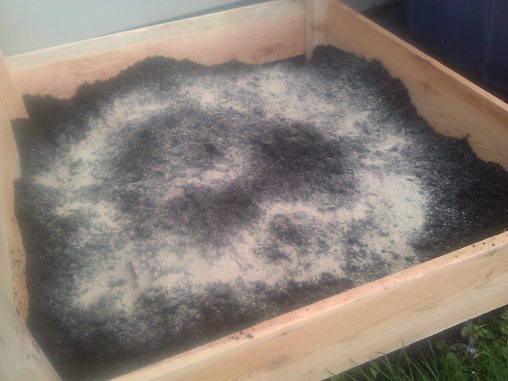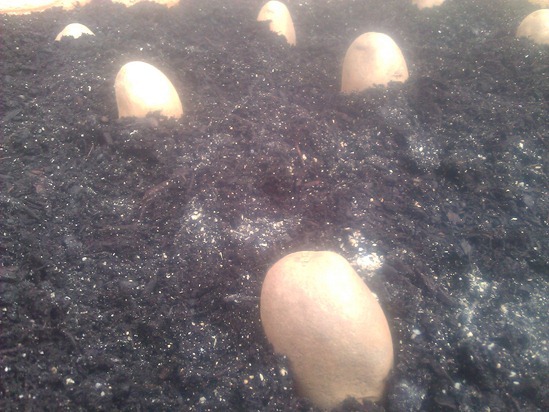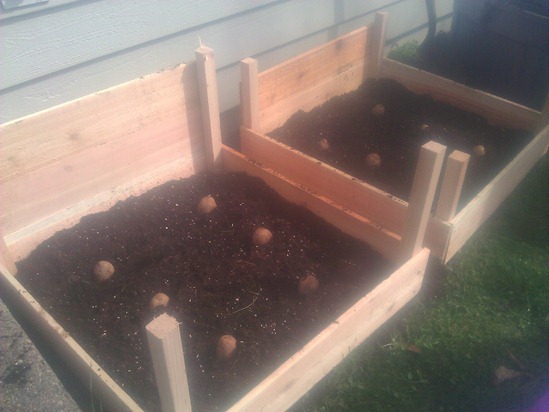Recent Articles
Picking strawberries and raspberries
11.8 years ago raspberries, strawberries 1 Comment
I like this time of year when I can quit my second job to support my kids strawberry and raspberry habits. At $5-6 for a half pint at some times throughout the year can be a great cost savings to pick these for practically free year after year.
My oldest was previously the biggest consumer but now out youngest (now 16 months) is taking in her share of the berries and has been enjoying the fresh local berries. We actually can not go anywhere without providing her with her strawberry fix. Not sure what we will do in a couple months when we stop producing.
For my area still is a little early for raspberries but the conditions have been working out and have been enjoying these for the past couple weeks as well. I did not actually plant these raspberries they snuck in under my neighbors fence which a little precautionary raspberry control I have let them thrive on my side of the fence as well. I am actually considering to let them spread farther down my fence for even larger yields.
Opening day at the local farmers market
12 years ago farmers market 4 Comments
In my area today was the first day for our local farmers market. As you can see from the picture above I picked up some asparagus, spinach, lettuce and a few yams. Well I also picked up some kettle corn for the kids and some fresh flowers for my wife…I did pass on some leeks, Swiss chard, bak choy (plenty growing in my garden) as well as radishes and rutabaga which I do not personally care for.
Now before you head out to your local farmers market you might find the selection somewhat limited compared to your local grocery store, so don’t expect to see raspberries or tomatoes during these first week (unless you live much more south than me) What you will find is great local organic produce with the only thing fresher is picking them out of your own garden.
If I have you sold on running down to your local farmers market but no idea where to find it, just go here and enter your zip code to see where your closest farmers market is, you may also notice as I did there are also some pretty close farmers markets open during the weekdays which I may need to visit to get my fix of fresh veggies in the middle of the week.
Improving Plant Health With Companion Plants And Polycultures
12 years ago companion planting, guest post, Polyculture 2 Comments
Ecological garden designers often look to the native plant communities in their region to see which plants grow together naturally, in order to help determine suitable plant combinations for their designs.
This is because many plants that grow together actually benefit each other. It’s an excellent strategy, and yet plants need not have evolved together in order to get these benefits…
What Is Companion Planting?
Companion planting involves pairing plants that work well together. Unlike the plant communities outlined above, however, these plants may come from different regions. Popular examples in the vegetable garden are green beans and strawberries, carrots and tomatoes, and lettuce and spinach.
Sometimes the plants simply work well together because they take up different areas above or below the soil. Sometimes one plant deters a predator of the other plant. In the above examples, the plants tend to just grow better when planted near each other.
Often, the benefits realized are not nearly as grand as some gardening books indicate, but usually, no harm is done.
And yet companion planting is only the first step…
What Is A Polyculture?
A polyculture goes even further. While a monoculture is large swaths of just one plant, and companion planting often refers to planting 2 species together, a polyculture involves planting many species together to take advantage of various niches in the garden, much the way nature fosters this diversity:
-Some will grow tall and provide shade, while others hug the ground.
-Some are ready for harvest early, while others take longer, even within the same food group, such as lettuces or tomatoes.
-Some attract beneficial insects, while others repel plant predators.
-Some provide nitrogen for the soil, while others happily gobble it up.
Permaculture has embraced the polyculture philosophy by using integrated, multi-level plantings of dozens of species to take advantage of all the various opportunities in the garden. And sometimes it’s useful to create a “guild”, where a central “important” plant such as a fruit tree is surrounded by a group of plants that benefit the tree.
Summary
So not only can plants get along with each other, but they can provide for each other. While cover cropping during the low season is a great way to protect and improve the soil, ornamental and food gardens can also be interplanted throughout the entire year with plants that provide more benefits than just being beautiful or just producing food.
I don’t do straight, monoculture rows in my garden anymore. Each bed may have 20 plants all mingling together, perhaps 15 food plants and 5 beneficials such as yarrow, echinacea, chamomile, bee balm, clover or any number of others.
I may not get as big of a harvest from each food plant, but my overall yields are definitely bigger and it’s been obvious that the health of my plants has improved after a few seasons of finding out what works.
If you’re used to straight rows, you may want to take one bed this year and experiment with more interplanting. It’s often best to just experiment with many plants and then see what works in your soil and climate.
Phil Nauta is a SOUL Certified Organic Land Care Professional and author of the book ‘Building Soils Naturally’, to be released by Acres U.S.A. this spring. He taught for Gaia College and operated successful organic landscaping and organic fertilizer businesses prior to launching SmilingGardener.com to teach innovative organic gardening and vegetable gardening methods.
vertical gardening recycling two liter bottles
12 years ago cheap, planter, recycle, upside down planter, vertical gardening 3 Comments
I am always looking for ways to enable myself to grow more in my small suburban yard. One technique to do this is using the maximum vertical space to your advantage. Whether this is growing your tomatoes and cucumbers up a trellis or growing some tomatoes from hanging upside down planters the more you successfully make use of this space the higher yields you can achieve.
One part of my yard has a great location which southern facing but do to concrete supported fence posts I can not grow anything there until now. With my homemade vertical planter I can grow a variety of small root vegetables such as lettuce, herbs, cherry tomatoes, flowers, etc.
Step #1: Cut to size. Depending on the soil needs of the plants you are growing cut off the tops using a utility knife or a good pair of scissors/kitchen shears. Cut just a bit lower on one side of the “planter” to provide a little more room for the next step and give the plant a natural way to hang over the side of the planter.
Step #2: Drill holes in top two caps. Not much else to describe here…this is done to restrict the flow of water to the planters below this one and prevent erosion of dirt out of the planters due to too high of water flow.
Step #3: Attach bottles. Pick any scrap piece of plywood you have around and attach the bottles with a couple of small screws. You can be as creative as you want on this one. A couple things to keep in mind, you want the water to flow between the planters to save yourself some time when watering these (you only have to water the top one) You also want to thing about how the plants may mature and couple block the sun from some of the plants below it, so staggering directions can help with this.
Step #4: Fill with dirt. Add some good potting soil (I went with my favorite coconut coil) and water from top to ensure water drips as expected. If you aim is off you can always add another screw (or adjust) to get everything lined up.
Below is a video of this vertical planter in action.
How to grow potatoes with a potato tower
12.1 years ago potato tower, potatoes, vertical gardening 19 Comments
I like to grow and eat potatoes, the problem is they can easily take over a plot of land and more than likely you will be growing potatoes in the same spot for a few years (not very good crop rotation) when one or two stray spuds don’t get harvested and a plant pops up the next year.
One great solution to this problem is a potato tower, this is a structure that keeps your potato plant and potatoes contained to an upright structure which can consist of many materials.
Recycled Tires
Fencing
Wood
I decided to go with the classic approach and build mine out of wood. I took four pieces of 1”X1” pine and cut to approximately 2.5 foot lengths. Side note: Just for the record I did not use tape measure for the construction of this potato tower. I then took two lengths of untreated/unstained cedar fencing and cut them in equal pieces.
Added a couple of screws to attach the cedar to the pine and kept doing this until I had a really cool upside down table without a top. Now you could pull out a level/square and pretty confident this will not be plum or true in any way…but it really doesn’t matter just holding some dirt and potatoes.
As for the location I found this great spot which grows weeds very well and not much of anything else.
After some minimal weeding and an laying down a layer of weed blocking fabric I plopped down my structure and added a few inches of rich compost.
To give the potatoes a head start I added a couple cups of bone meal, mixed well and added nine potatoes and topped with a few more inches of compost.
Now here is where the tower part comes from, as the potatoes greenery grows more than 3 inches above the surface you screw in some more cedar fencing to increase the height nearly cover with compost and repeat until you are tire of doing this. The theory is that your plants will grow potatoes over this entire height giving you many pounds of potatoes.
Important Tip: Any early setting variety of potato will produce all its potatoes at once so you will only get potatoes on the bottom six inches or so of your potato tower. So this technique only makes sense for later setting potatoes, here are a few to consider:
- Gourmet Fingerling Potato
- All Blue Potato
- Red Pontiac Potato
- Russet Potato
- German Butterball Golden Potato
UPDATE #1 (4/1/2012): Based on many of the comments on the mixed results of the success rate of this technique, I have decided to do a side by side N=1 experiment to see how my yields compare with 18 inches of soil versus 12 inches of soil using the same size and construction of a potato tower.
Plan your garden with Sprout Robot
12.2 years ago gardening software, indoor seed starting, robot, seeds, sprouting 4 Comments
I came across Sprout Robot in the past week, you simply create an account and provide your zip code and it will give you a complete calendar of planting dates as well as follow ups when to expect sprouts to form, when to bring out, harvest etc.
When a new event is coming up you will get an email similar to the one below letting you know what is new to plant that week.
When you connect to the site you then can “Check-In” and check off the tasks you have completed which get updated with next event for that plant.
They also have an option where they will even send out organic seeds just in time for planting in your area starting at $19.99 a year, though personally I have plenty of seeds saved for at a couple of years in my refrigerator.
